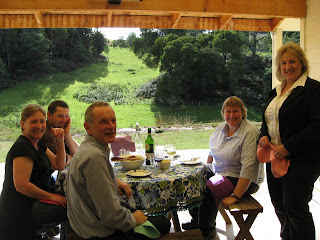
Journal keeping is such a weird practice when you examine it. I mean, who cares what I did today or how I felt about it?
Actually, I met with my editor for the first time this morning. I was nervous about it; she was lovely. She gave me the publishing schedule for my book. I gave her a jar of my End of Draft jam.
I recorded all this in my journal.
Why did I do this? No one else will read it. Mostly I can’t even bear to reread it myself.
It’s a habit: I’ve been keeping a journal for over twenty years now.
It’s a way of catching my thoughts, or capturing story ideas or dreams before they disappear. Sometimes, like when I can’t sleep at night, I use my journal to get rid of the kind of thoughts that buzz around my head like wasps trapped in a bottle.
I use it to make sense of whatever’s happening in my world. To let off steam. To practise writing when I don’t have an ongoing project, or as a safe place to try out things that I may end up using in a current project. Even to record events.
They say there’s a chip of ice in every writer’s heart. Sixteen months ago, in July 2007, my mother looked as though she was going to die. I sat every day for hours in her hospital room and wept as she refused food and struggled for breath. And I recorded it all in my notebook. Sometimes I sat by her side and took down her words like dictation as she spoke them.
It’s as though there are two parts of me that co-exist: the doer and the recorder. I watch myself as much as I watch everyone else (What’s she doing now? Why is she doing that?), only with myself I have access to my inner life – feelings, thoughts, dreams and memories – whereas with others I have only the externals. It's no wonder I was drawn to writing a memoir.
When would-be writers ask me for advice, I tell them to keep a journal. It’s not always what they want to hear and I often can’t explain what journal keeping gives you that’s so important to a writer, but I know I could never have written either of my novels without that habit of mine. And of course Alzheimer’s: A Love Story owes its entire existence to that pile of spiral-bound notebooks that document it all – my mother’s decline and my ongoing reactions to it, every painful, happy, sad, funny moment.
 One of the good things about not working on my book is that I've been able to catch up on my reading. My current object of attention is Island, Tasmania's excellent literary journal. I always find its nonfiction strong and this issue (115), which came out in the summer and which has sat on my bedside table since then, is no exception. I'm especially enjoying the essays on memoir and autobiograpy writing. I suppose because this is what is on my mind at the moment.
One of the good things about not working on my book is that I've been able to catch up on my reading. My current object of attention is Island, Tasmania's excellent literary journal. I always find its nonfiction strong and this issue (115), which came out in the summer and which has sat on my bedside table since then, is no exception. I'm especially enjoying the essays on memoir and autobiograpy writing. I suppose because this is what is on my mind at the moment.























